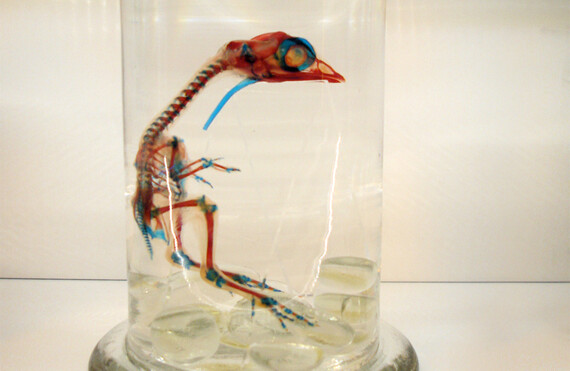The ongoing world food crisis has incited riots and protests in more than ten countries over the past several months. In Haiti, seven people were killed in riots that led to the ouster of Prime Minister Jacques Edouard Alexis. Egypt's President Mubarak enlisted the army to produce and distribute bread after several people were killed in bakery clashes.
Drought, a declining dollar, and a shift of investment money into commodities have all contributed to bare shelves and empty bellies. The use of cropland for biofuel production has also put pressure on the food supply. At the same time, per capita consumption of meat in the developing world has doubled in the last 20 years, as dietary changes reflect the populations' expanding wealth.
Despite such growth, the average amount of calories consumed or discarded daily in the United States remains several belt notches beyond even some European levels.
Traditional methods of assembly-line meat production require not only ever-increasing inputs of corn, soy, and other grains, but also enormous amounts of energy. The United Nations Food and Agriculture Organization reported in 2006 that the livestock sector generates 18 percent more greenhouse gas emissions than the transport sector.
The food crisis is endemic and long term. According to the Guardian, to match the growth in human population "more food will have to be produced worldwide over the next 50 years than has been during the past 10,000 years combined."
In 1932, Winston Churchill said, "Fifty years hence we shall escape the absurdity of growing a whole chicken in order to eat the breast or wing by growing these parts separately under a suitable medium." The timing of his prediction proved ambitious, but the technology is becoming attainable.
Animal-free in vitro meat may present a partial solution to hunger. Jason Matheny, director of New Harvest, a nonprofit that funds research on in vitro meat, says that a single cell could produce the annual meat supply for the entire world. And it can be done in a way that's better for the environment and human health than raising livestock.
Researchers started working with in vitro proteins in the late 1990s, originally developing the idea as a way to create food for astronauts on long space missions. The first edible muscle protein was created from a goldfish in 2000, promising industry-wide change. In June 2007, the In Vitro Meat Consortium was created to form an "international alliance of environmentally concerned scientists" that want large-scale in vitro meat production.
In order for animal stem cells to divide and multiply, TIME reports that they are placed in a nutrient-rich medium and then grown in a bioreactor. To replicate the texture of natural muscle, the cells are regularly stretched and flexed, or exercised.
Last month, People for the Ethical Treatment of Animals (PETA) offered a $1 million prize to the first person who can create chicken meat from animal stem cells, and have it ready to sell by 2012. Researchers who accept the challenge must produce enough chicken to sell in 10 states by mid-2012. The meat must be indistinguishable from real chicken in taste and texture and comparable in price. While PETA insists that "humans don't need to eat meat at all," the group says that since many people won't kick their meat addictions PETA will help provide access to harm-free edible flesh.
The technology to produce in vitro meat is almost in place, says Dr. Vladimir Mironov, a tissue engineer and assistant professor at the Medical University of South Carolina. But some roadblocks impede the process, particularly scale and cost. With current technologies, it would take $1 million to create half a pound of beef.
At a recent meeting of the In Vitro Meat Consortium, researchers concluded that it will be possible to produce in vitro meat in large quantities in the future, but not without sustained funding. According to TIME, the production of in vitro chicken is estimated by scientists to cost about double that of traditional livestock chicken, but prices are expected to fall as the production process becomes more efficient.
"Whatever the factors are, the overall amount of food consumption has gone up, relative to the amount of supply, and we need to find a way to deal with that," said Farhan Haq, a spokesperson for UN Secretary-General Ban Ki-moon. "What's needed is trade and investment being used to bring about a green revolution—technologies that can improve agricultural productivity, particularly across Africa, but in general as well." A pink, fleshy revolution might help, too.
![]() This article is licensed under a Creative Commons License.
This article is licensed under a Creative Commons License.
Please read our usage policy.




